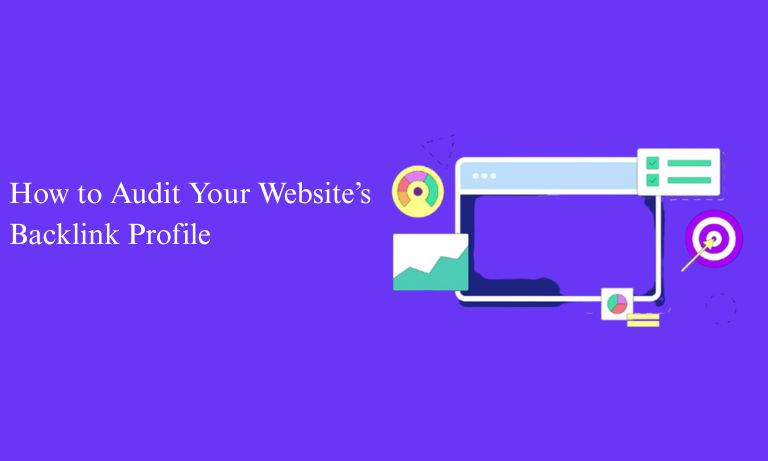Ever feel like your website’s buried on page 10 of Google while your competitors are dancing up top? Well, your backlink profile might be the reason. Yep, those sneaky little links can either be your golden ticket to traffic town or the silent killers dragging your site into digital oblivion. But hey, no need to panic. Today, we’re diving deep into how to audit your website’s backlink profile and trust me, it’s not as scary as it sounds.
Whether you’re a total newbie or a seasoned marketer who’s been winging it for too long, this guide will walk you through it all step by step, tool by tool. So, grab your coffee (or wine we’re not judging) and let’s get your link game back on track.
Why You Really Need to Audit Your Website’s Backlink Profile
Before we jump into the how, let’s talk about the why. Ignoring your backlinks is like ignoring smoke from your car engine. You can’t see the damage yet, but something’s probably cooking.
Backlinks Aren’t Just Fancy Internet Hugs
- They signal trust to search engines – More quality backlinks = higher rankings.
- They can be toxic – Spammy or irrelevant links? That’s a red flag for Google.
- They’re your SEO currency – High-value backlinks can fuel traffic and authority.
So, if you’re still wondering how to audit backlinks for SEO improvement, know that a clean link profile is essential to stay on Google’s good side.
Tools You’ll Want Before You Start to Audit Your Website’s Backlink Profile
Let’s be real, trying to do a backlink audit manually is like trying to mow your lawn with scissors. You need the right tools. Lucky for you, there are plenty of options.
Best Tools to Analyze Backlink Profile
- Ahrefs – A backlink beast. Tracks new, lost, and toxic links with a slick interface.
- SEMrush – Packed with features and spot-on when it comes to spotting bad backlinks.
- Google Search Console – Free and surprisingly effective for basic link analysis.
- Moz Link Explorer – Great for domain authority insights and backlink trends.
- Majestic SEO – Ideal for visual learners with its handy backlink graphs.
No need to use all of ’em just pick one that fits your budget and comfort level. Think of these as your digital detectives.
Step-by-Step: The Ultimate Backlink Audit Guide for Beginners
Alright, let’s roll up those sleeves. Here’s how to go from “Wait, what’s a backlink audit?” to “Look, Ma! Clean backlinks!”
1. Export Your Backlink Data
Start by grabbing your full backlink list from your tool of choice. Download it as a CSV file you’ll need for the deep dive.
2. Sort and Categorize
- Good Links: Relevant, high authority, from reputable sites.
- Neutral Links: Not harmful but not really helping either.
- Bad Links: Spamy, irrelevant, or from shady directories.
Pro tip: Trust your gut, but also use metrics like domain authority and anchor text relevance.
3. Identify and Isolate Toxic Backlinks
Red flags to watch for:
- Links from unrelated or foreign language websites
- Exact-match keyword anchor texts that feel spamy
- Sites flagged for malware or adult content
4. Remove or Disavow the Junk
Wondering how to remove low-quality backlinks from Google? Here’s the scoop:
- Reach out to webmasters – Ask nicely for a removal. Sometimes it works.
- Use Google’s Disavow Tool – Add the bad links to a .txt file and submit it to Google. It’s like saying, “Hey Google, pretend these links don’t exist.”
Don’t Forget Ongoing Backlink Monitoring
One-and-done? Nope, not with backlinks. Think of it like brushing your teeth, doing it regularly, or face the consequences.
Set Monthly or Quarterly Audits
- Schedule backlink checks in your SEO calendar
- Keep an eye out for sudden spikes (which might mean spam attacks)
- Use alerts in Ahrefs or SEMrush to track new backlinks as they come in
FAQs
Q1: How often should I audit my backlink profile?
Ideally, once a quarter. But if you’ve recently done link-building or had a sudden drop in rankings, check sooner.
Q2: Can too many backlinks hurt my site?
Yes, especially if they’re from sketchy sources. It’s quality over quantity every time.
Q3: What’s the easiest way to spot a toxic backlink?
If it looks spammy, irrelevant, or is hosted on a flagged domain, consider it toxic.
Q4: Do I need a paid tool for backlink audits?
Not necessarily. Google Search Console is free and decent for beginners, but paid tools give you way more data.
Conclusion:
There you have it, your no-nonsense, zero-fluff guide on how to audit your website’s backlink profile without turning it into a week-long nightmare. Whether you’re cleaning up years of backlink clutter or just getting started, regular audits are your secret weapon for long-term SEO success.
So go ahead pull back the curtain on your link profile, kick out the junk, and make room for the good stuff. Your future rankings will thank you.

Leave a Reply